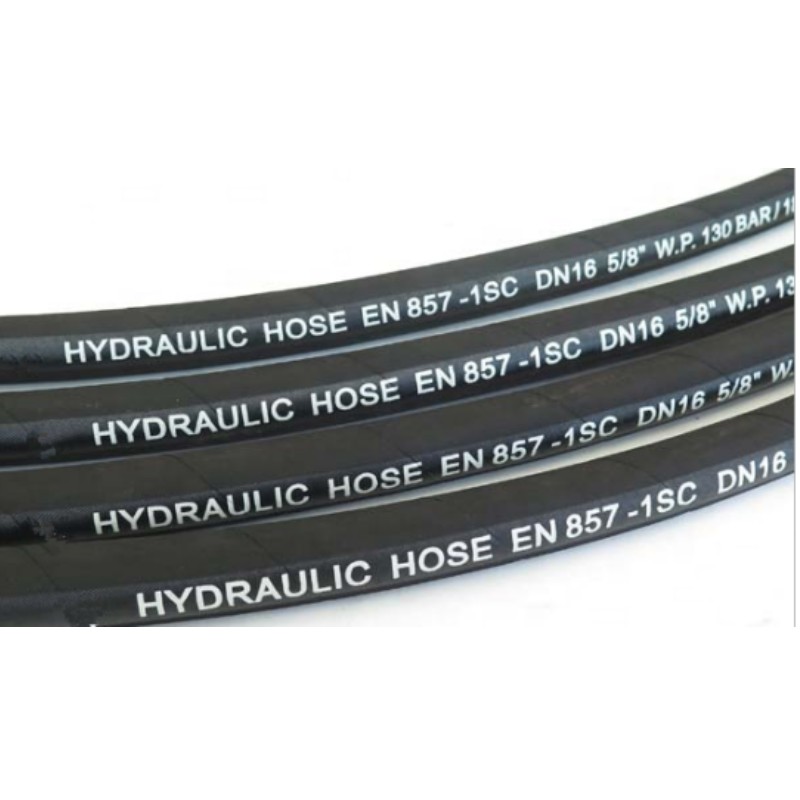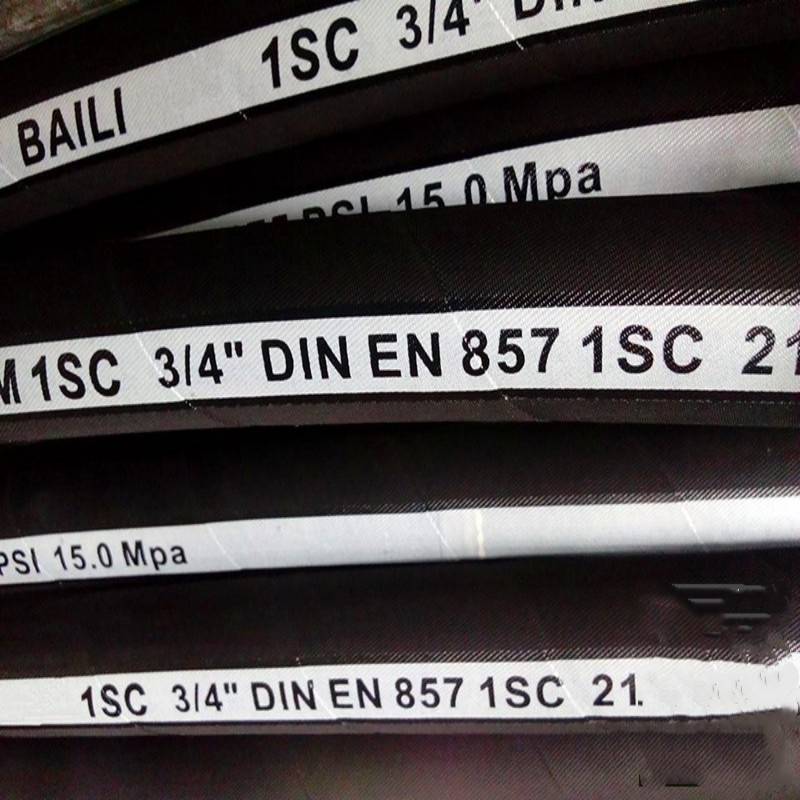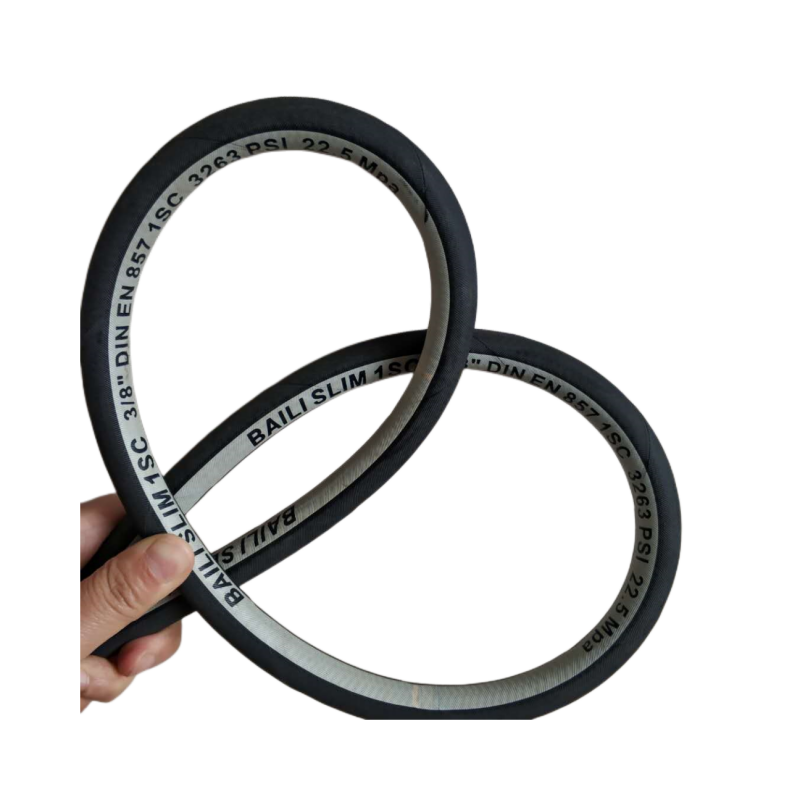7 月 . 29, 2025 12:20 Back to list
High Quality Rubber Air Hose 3 8 – Durable, Heat Resistant, Versatile
The rubber air hose 3 8 is a pivotal element in fluid transfer and pneumatic applications across multiple industries. Backed by cutting-edge technology, stringent certifications, and evolving materials science, modern rubber air hose 3 8 assemblies bring superior resilience and efficiency, meeting standards set by ISO, ANSI, and other regulatory agencies. This guide offers an expert-level analysis of rubber air hose 3 8 and relevant types such as rubber air brake hose fittings, power steering rubber hose, heat resistant rubber hose, gates rubber hose, braided rubber hose, 3/4 id rubber hose, and more, focusing on specification, life cycle, industry compliance, and custom solutions.

1. Industry Trends: The Evolution of Rubber Air Hose 3 8 in Key Sectors
With accelerated industrial automation, the demand for high-performance and safe air hose solutions such as rubber air hose 3 8 is surging globally. According to Statista (2023), the global industrial hose market size is projected to exceed $19 billion by 2027, growing at a CAGR of 5.8% (source: Statista Industrial Hose Data).
- Hydraulics & Pneumatics: Key in automotive, mining, rail, construction, and manufacturing.
- Emerging Applications: Advanced power steering, brake assemblies, and chemical transfer systems increasingly demand heat resistant rubber hose and braided rubber hose for safety and longevity.
- Safety & Compliance: ISO 2398:2016, SAE J1402, and EN857 are industry benchmarks, dictating working pressure, burst strength, and aging resistance.
2. Technical Parameters and Benchmark Comparison
The rubber air hose 3 8 market includes multiple product series with varied spec details. Below is a consolidated parameter table showing mainstream hoses and competitive brands:
| Product Name | Size (ID) | Working Pressure (psi/bar) | Burst Pressure (psi/bar) | Temperature Range (°C) | Bend Radius (mm) | Cover Material | Standards |
|---|---|---|---|---|---|---|---|
| DIN EN857 1SC HYDRAULIC HOSE | 3/8" (9.5mm) | 2320/160 | 9280/640 | -40~100 | 90 | Synthetic Rubber | EN857 1SC, ISO |
| Gates Rubber Hose | 3/8" | 300/21 | 1200/83 | -29~93 | 100 | SBR/EPDM | SAE J1402 |
| Generic Braided Rubber Hose | 3/8" | 250/18 | 1000/69 | -25~80 | 120 | NR+Textile | ANSI/ISO |
| Heat Resistant Rubber Hose | 3/8" | 200/14 | 900/62 | -40~150 | 95 | EPDM | EN853 |
Key Observations: The DIN EN857 1SC HYDRAULIC HOSE provides the highest rated working and burst pressure among main competitors and exceeds typical temperature tolerance.
3. ECharts Visualization: Parameter Trends
4. The Manufacturing Process of Rubber Air Hose 3 8: Step-by-Step Diagram
(Precision rubber, anti-aging additives)
(Homogenize for uniform polymer matrix)
(Form tube core at precise ID/OD)
(Reinforce with textile/steel wire mesh)
(UV, oil, abrasion resistant layer)
(Cross-linking for heat/chemical stability)
(ISO 1402 burst, flex, hydrostatic, aging)
For a visual walkthrough, visit Rubber Hose Manufacturing Video.

5. Material Science & Industry Standards
- Core Tube: Nitrile (NBR), EPDM, SBR, or CR, chosen for oil, ozone, or temperature resistance respectively.
- Reinforcement: High tensile steel wire or high-strength polyester, determining burst pressure and bend radius.
- Outer Cover: Synthetic rubber (weather, abrasion resistant). Specialty covers for power steering rubber hose or heat resistant rubber hose applications.
- Certifications: EN857, ISO 2398, SAE J1402, FDA (food-grade lines) ensure global compliance.
- Inspection: Hydrostatic test up to 2X working pressure, electrical resistance, flex cycles >500,000 (ISO/ANSI standard).
Typical Lifespan: Field tests show DIN EN857 1SC hoses logging 8-10 years in petrochemical applications due to advanced compounds and strict QA/QC.
6. Comparing Major Rubber Air Hose 3 8 Manufacturers
Selecting the ideal rubber air hose 3 8 or custom sizes (like 3/4 id rubber hose, 1/4 rubber air hose, 1/2 id rubber hose) requires comparing engineering, testing, after-sales, and lead time capabilities across brands.
7. Product Spotlight – DIN EN857 1SC HYDRAULIC HOSE
Technical Highlights: Engineered for superior safety and efficiency, DIN EN857 1SC HYDRAULIC HOSE combines ISO-compliant design with extended service life, catering to harsh industrial needs such as metallurgy, petrochemicals, mining, construction machinery, and advanced automotive braking systems.
| Item | DIN EN857 1SC | Traditional 3/8" Air Hose |
|---|---|---|
| Inside Diameter (mm) | 9.5 | 9.5 |
| Reinforcement | 1 Steel Braided Layer | Textile Yarn/PVA |
| Working Pressure (bar) | 160 | 21 |
| Temperature Range (℃) | -40 to +100 | -29 to +93 |
| International Compliance | EN857, ISO/TS 17165-2 | SAE J1402 |
| Lifetime (Years) | 8-10 | 3-5 |
Product Share in Major Applications

Service Life Comparison (Field Data)
8. Tailored Solutions: Custom Rubber Air Hose 3 8
Advancements in material engineering and process automation now enable highly customized designs for rubber air hose 3 8, 3/4 id rubber hose, 3 4 inch rubber hose, 1/4 rubber air hose, and 1/2 id rubber hose. Customization parameters include:
- Braid options: Synthetic yarn, aramid, steel wire, double wire
- End fittings: Quick-connect, thread, camlock, custom rubber air brake hose fittings
- Special covers: Flame-retardant, anti-static, FDA food grade, color-coded
- Length/tolerance: Cut-to-length, ±0.2mm ID/OD tolerance
- Surface treatments: UV screening, anti-oil treatments, corrosion-resistant coating
9. Application Scenarios: Real-World Case Studies
A major refinery in Singapore replaced legacy hoses with DIN EN857 1SC for all compressed air lines. Result: 47% fewer failures yearly, with increased routine safety compliance audit scores (+11%), as per BP Energy Outlook.
European OEM upgraded to a heat resistant rubber hose variant for excavator pneumatic and hydraulic lines. Result: Service interval doubled to >8,000 hours before maintenance (internal fleet report, 2023).
A railways division in Australia refitted truck air brake systems with rubber air brake hose fittings and braided hose, reducing downtime by 39% and meeting revised ADR 38/05 brake performance standards.
Municipal waterworks adopted 3/4 id rubber hose with WRAS/FDA rated covers for potable water transfer, resulting in zero internal corrosion and undetectable contaminant migration after 24 months’ use.
10. Industry Certification & Authoritativeness
- Company Recognition: The manufacturer of DIN EN857 1SC Hydraulic Hose boasts ISO 9001, ISO 14001, and ISO 45001 certifications with 16+ years of large-scale hose fabrication experience.
- Global Cooperations: OEM and ODM supplier for Caterpillar, Komatsu, Sinopec, Bosch Rexroth, and major construction/rail/energy enterprises.
- Third-Party Verification: All lots undergo Lloyd’s, TUV Rheinland, and SGS lab testing to validate pressure cycling, burst, and accelerated aging protocols.
11. Logistics, Quality Assurance, and Warranty
- MOQ: 100 meters / specification | Lead Time: 10-15 working days (for standard sizes, incl. rubber air hose 3 8); 20-30 days (bulk/custom).
- Packing: PE/PP wrapping, carton, palette or customer-specified export packing.
- Warranty: 24 months against manufacturing defects (policy aligned with EN857:2015 and ISO/TS 17165-2).
- Customer Support: 24/7 technical hotline, site installation guidance, free failure analysis reporting.
12. FAQ – Expert Answers for Technical Specification & Industry Terms
13. Sources, References and Further Reading
- Statista, Industrial Hose Worldwide Market Value, 2023, Industrial Hose Data
- BP Energy Outlook, Industrial Sector Trends: BP 2023 Outlook
- ISO 2398:2016 Rubber Hoses for Compressed Air – Specification: ISO 2398 Standard
- Society of Automotive Engineers (SAE) J1402 Air Brake Hose Standard: SAE J1402
- Baili Hydraulic Hose Official Product Page: DIN EN857 1SC HYDRAULIC HOSE
- Hydraulic & Pneumatics, “Comparing Hose Materials and Test Protocols”: Hydraulics & Pneumatics Forum
- Rubber Hose Tech Community, “Optimizing Service Life in Industrial Environments”: Engineering Tips Forums
-
Durable Rubber Air Hose 3 8 – Heat & Pressure Resistant, Versatile Use
NewsJul.29,2025
-
Durable Rubber Air Hose 3 8 – Heat Resistant, Braided & Flexible
NewsJul.29,2025
-
High Quality Rubber Air Hose 3 8 – Durable, Heat Resistant, Versatile
NewsJul.29,2025
-
High-Quality Rubber Air Hose 3/8 – Durable, Flexible, Heat Resistant
NewsJul.28,2025
-
Durable 1/2 ID Rubber Hose for Industrial and Automotive Use
NewsJul.28,2025
-
Durable Rubber Air Hose 3/8 – Heat Resistant, Braided Options
NewsJul.27,2025
